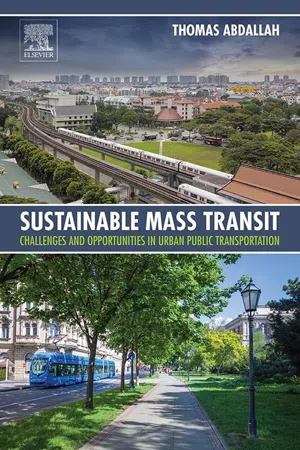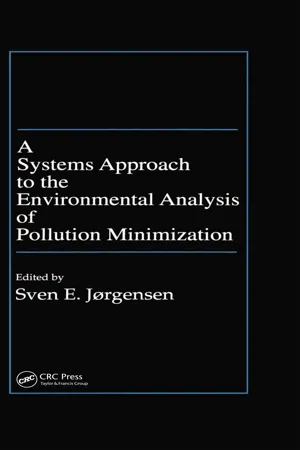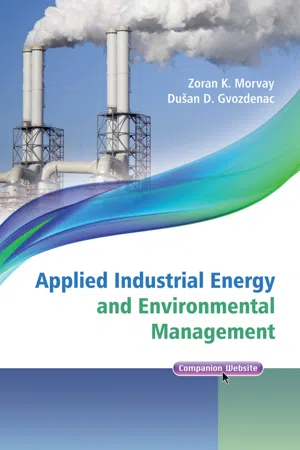Technology & Engineering
Environmental Management System
An Environmental Management System (EMS) is a framework that helps organizations manage their environmental responsibilities in a systematic and comprehensive manner. It involves establishing policies, procedures, and processes to identify, monitor, and control the environmental impacts of an organization's activities. The goal of an EMS is to promote sustainable practices and minimize the organization's environmental footprint.
Written by Perlego with AI-assistance
Related key terms
1 of 5
10 Key excerpts on "Environmental Management System"
- eBook - ePub
Urban Pollution
Science and Management
- Susanne M. Charlesworth, Colin A. Booth, Susanne M. Charlesworth, Colin A. Booth(Authors)
- 2018(Publication Date)
- Wiley-Blackwell(Publisher)
22 Use of Environmental Management Systems to Mitigate Urban Pollution Rosemary Horry1 , and Colin A. Booth2 1 College of Life & Natural Sciences, University of Derby, United Kingdom2 Architecture and the Built Environment, University of the West of England, United Kingdom22.1 Introduction
An Environmental Management System (EMS) is an instrument that can help organisations to manage and positively improve their level of impact on the environment (Christini et al., 2004 ; Oke, 2004). An EMS helps a company measure its environmental performance and provides the framework for the integration of sustainable development goals within the organisation's corporate plan (Ilinitch et al., 1998; Jolevski, 2013; Owolana and Booth, 2016). Within organisations, environmental management should be treated as an integral part of any operation, alongside the option for corporate social responsibility (CSR), to ensure they not only acknowledge the impacts of their operations but also that they have plans and strategies in place to minimise their harm to the environment and society. This is relevant to both their daily operations and also any resulting risk from an emergency situation (e.g. pollution events).Typically, an EMS encompasses policies, goals, plans, and regulatory requirements and is usually reflected in the company's annual reports. Christini et al. (2004 ) give the following basic characteristics for an organisation's EMS: (1) goals, methods, and a timeline for achieving environmental criteria; (2) procedures for maintaining a paper trail in relation to those goals; (3) a defined structure and a matrix of responsibilities, as well as allocated resources; (4) corrective actions and emergency procedures; (5) an employee training plan; and (6) a plan for monitoring and auditing the organisation's performance in achieving the EMS goals (Owolana and Booth, 2016).This chapter provides an overview of the importance for organisations to have an established EMS in place. It then employs a series of infamous case studies to highlight where an EMS could have served as a useful means of mitigating pollution events. - eBook - ePub
Sustainable Mass Transit
Challenges and Opportunities in Urban Public Transportation
- Thomas Abdallah(Author)
- 2017(Publication Date)
- Elsevier(Publisher)
Chapter 9Environmental Management Systems
Abstract
An Environmental Management System, or EMS, is a structured framework under which an entity can manage environmental impacts. Many transit agencies have embraced the structured EMS to ensure compliance, and also include sustainability initiatives and mitigation measures that go beyond compliance. The ISO 14001 EMS standard is the world’s most recognized best management practice in evaluating EMSs, which includes at minimum an environmental policy, and an internal review of activities that identify the most significant environmental aspects.An EMS is centered around communication and awareness of environmental issues, with the intent to have participation and understanding from every corner of an agency, facility, or department. Ultimately, an EMS is a management tool to measure environmental performance to validate continuous improvement, and can be supplemented and supported by established environmental rating systems. An EMS can help an agency to make proper expenditures, with protection of the environment as part of that equation.Keywords
Environmental Management Systems; ISO 14001 standard; environmental policy; aspects and impacts analysis; environmental benefit programs; objectives and targets; significant environmental aspects; National Environmental Policy Act; Plan−Do−Check−Act Cycle; monitoring and measuring; Leadership in Energy And Environmental Design; energy star equipment; Envision; EMS fence lineIntroduction
An Environmental Management System, or EMS, is a structured and specially organized framework under which an entity can manage environmental impacts by ensuring compliance and helping to continually measure and improve environmental performance. At the foundation of an EMS is compliance with environmental laws and regulations. Many mass transit agencies in the United States have embraced the structured EMS to help ensure compliance, and select appropriate sustainability initiatives that go above and beyond environmental compliance in the operation of existing transit services. - eBook - ePub
Environmental Impact of Mining and Mineral Processing
Management, Monitoring, and Auditing Strategies
- Ravi Jain(Author)
- 2015(Publication Date)
- Butterworth-Heinemann(Publisher)
Chapter 3Environmental Management System Implementation in the Mining Industry
Abstract
An Environmental Management System (EMS) is a component of a mining management system that creates a framework for the procedures, responsibilities, and processes required to prevent adverse environmental, economic, and social impacts and allows for continuous improvement. Successful implementation of an EMS requires some initial capital costs and extensive planning and working together with governmental agencies, industry, and other stakeholders to achieve the desired outcomes. An EMS can ultimately reduce the overall long-term operating and rehabilitation costs associated with adverse environmental, economic, and social impacts. Not all EMSs are alike, as goals and objectives can vary based on the location and needs of various stakeholders unique to each project. This chapter provides guidance on implementing an effective Environmental Management System using an 8-step approach.Keywords
Environmental Management System; Best practices; Implementation; Cost and benefits; Project planning; Assessment3.1. Introduction
An Environmental Management System (EMS) is a component of a mining management system that pertains to the procedures, responsibilities, and processes for preventing harmful environmental, economic, and social impacts. An Environmental Management System helps the mining company achieve leading practices by providing a framework for continuous improvement (Australian Centre for Sustainable Mining Practices, 2011 ; Environment Australia, 2002 ; Hilson and Nayee, 2002 ; National Mining Association, 2012 ). In the past, economic and financial gains were heavily emphasized in the mining industry and little emphasis was placed on mitigating mining impacts on the environment, resulting in environmental degradation. Environmental degradation is no longer acceptable and balances between economic gains, local community benefits, and environmental impacts can be achieved to create advantages for all. To gain local acceptance, stakeholder backing, and regulatory approval, the mining industry needs to increase their responsibility to the environment and local communities. Environmental Management Systems are currently used to efficiently manage environmental impacts, ensure regulatory compliance, reduce costs and risks, and improve reputation, and meet stakeholder demands (National Mining Association, 2012 - Sven E. Jorgensen(Author)
- 2020(Publication Date)
- CRC Press(Publisher)
An environmental opportunity might be the reduction of energy and resource consumption, and therefore costs of production, by reducing pollution or recycling wastes, or it might involve selling the product to a market which imposes environmental requirements. One example of a company that has successfully reduced its energy consumption is the 3M Corporation; through its program with the motto, “Pollution Prevention Pays,” its cost savings from pollution control measures have often reached more than US$1 million per year. Enterprises throughout the world are introducing EMS to manage environmental risks and opportunities more systematically and efficiently.Specifically, an EMS is intended to help your enterprise:- Identify and control the environmental aspects, impacts, and risks relevant to the organization.
- Develop and achieve its environmental policy, objectives, and targets, including compliance with environmental legislation.
- Define a basic set of principles that guide your organization’s approach to its environmental responsibilities in the future.
- Establish short-, medium-, and long-term goals for environmental performance, making sure to balance costs and benefits, for the organization and for its various stakeholders.
- Determine what resources are needed to achieve those goals, assign responsibility for them and commit the necessary resources.
- Define and document specific tasks, responsibilities, authorities, and procedures to ensure that every employee acts in the course of their daily work to help minimize or eliminate the enterprise’s negative impact on the environment.
- Communicate these throughout the organization, and train people to effectively fulfill their responsibilities.
- Measure performance against preagreed standards and goals, and modify the approach as necessary.
The integration of environmental management into the overall management function of an organization is critical because the environment is one among a number of external issues affecting the enterprise. A stand-alone EMS would not be effective.- eBook - PDF
Tourism Management, Marketing, and Development
Performance, Strategies, and Sustainability
- Marcello M. Mariani, Dimitrios Buhalis, Wojciech Czakon, Ourania Vitouladiti, Marcello M. Mariani, Dimitrios Buhalis, Wojciech Czakon, Ourania Vitouladiti(Authors)
- 2016(Publication Date)
- Palgrave Macmillan(Publisher)
2. Environmental Management in Shelters EMS Implementation and Certification The growing concern about the impact of business activity on the natural environ- ment has contributed to the development of different standards that guide orga- nizations in the adoption of EMSs (Alberti et al., 2000; Trierweiller et al., 2013). Currently, the most widespread voluntary standards are: EMAS and ISO14001. Both have in common the need to implement a structured management system in a series of stages that defines organizational policies, procedures, and practices relat- ing to environmental issues (Hillary, 2004). Regulation 1836/93 on the Eco-Management and Audit Scheme of the European Union, or the EMAS Regulation, is an European standard aiming to provide guid- ance to companies interested in implementing an Environmental Management System and later obtaining certification recognized in Europe—and even beyond European borders—which demonstrates the company’s environmental commit- ment. Its aim, therefore, is twofold. On the one hand, the continuous improvement of companies’ environmental behaviur through the implementation of policies, pro- grams, and EMSs in their operation centers and postassessment, and, on the other, the public demonstration of their environmental commitment (Dash and Junquera, 2001; Puvanasvaran et al., 2012; Sammalisto and Brorson, 2008). Figure 12.1 summarizes the implementation phases of an Environmental Management System according to the EMAS standard. ISO14001 is an international standard that also offers guidance for the imple- mentation and certification of EMSs and allows companies to publicly demon- strate their commitment to protecting the natural environment (Teng, 2011). It is based on three principles: pollution prevention, continuous improvement, and voluntary participation (Bansal and Hunter, 2003). It does not establish absolute - eBook - ePub
Integrated Management Systems for Construction
Quality, Environment and Safety
- Alan Griffith(Author)
- 2018(Publication Date)
- Routledge(Publisher)
- EMSs are particularly pertinent to the nature and activities of the construction industry, where the potential of a project to affect the environment is ever present and its impacts can be considerable.
- EMSs are widely recognised and applied within the construction industry as a focused approach to maintaining environmental safeguards of construction developments and project sites.
- The EMS should follow the sections as detailed in ISO 14001, the system specification.
- To establish an EMS a company should: (1) develop a manual of procedures; (2) implement the procedures in the course of its business; (3) provide evidence of implementation through documentation; and (4) continually improve the system and its business processes.
- An EMS should have four levels of documentation: (1) a system manual; (2) a set of management procedures to guide supervision; (3) a situation-specific implementation plan, where necessary; and (4) a set of work instructions to guide process-based operations.
- A company may apply to a government-accredited certification body for registration of an EMS conforming to ISO 14001 where there is appropriate evidence of system implementation, and capitalise on the benefits of such recognition in the commercial and business marketplace.
- A company should ensure that its business supply chain is maintained and that all suppliers of goods and services meet the same environmental expectations that it does.
- The requirement for site waste management plans for construction projects of particular type and size means that environmental responsibilities are shared and must be managed both up and down the supply chain.
Overview
Companies in all sectors of industry, business and commerce have realised that there are growing expectations upon them to operate in a more environmentally friendly way and demonstrate improved environmental performance. This is no more so than in the construction industry where environmental issues are at the forefront of all its activities. Increasing pressure from customers, clients, industry regulation, national legislation and international standards of operation means that companies cannot turn a blind eye to the environment but must seek to understand the environment better and work with it and in its interests. Embracing environmental matters, issues and concerns is far from easy for some companies to accommodate as they tend to be overshadowed by the more pressing need to deliver quality products and services on time and to budget. Notwithstanding, many companies have seen the need to respond to the environmental dimension of their business through the establishment of a formal EMS. Such developments have tended to mirror QMSs, which have become an established and accepted part of modern business organisation and operation. Moreover, the presence of international standards for EMS development and implementation, following the traditions of quality management, means that there are considerable benefits to be accrued through proactive management of a company’s interrelationship with the environment. - eBook - PDF
Environmental Management System ISO 14001: 2004
Handbook of Transition with CD-ROM
- Syed Haider(Author)
- 2016(Publication Date)
- CRC Press(Publisher)
Establish a structure and (a) program(s) to implement the policy • and achieve objectives and targets. YOUR COMPANY NAME HERE Environmental Management Systems Manual GENERAL REQUIREMENTS Section-1, Clause-4.1 Revision no.: 0 Written by: Checked by: Approved by: Date supersedes: mm/dd/yyyy Date issued: mm/dd/yyyy Page: 1 of 1 Environmental Management Systems Manual 31 Facilitate planning, control, monitoring, corrective action, • auditing, and review activities to ensure both that the policy are complied with and that the Environmental Management System remains appropriate. Be capable of adapting to changing circumstances. • Indicate continuous improvement of the EMS. • State how the organization will define the scope of the EMS. • Reference SOP—[Number—ESM-4.1, dated mm-dd-yyyy]. YOUR COMPANY NAME HERE Environmental Management Systems Manual GENERAL REQUIREMENTS Section-1, Clause-4.1 Revision no.: 0 Written by: Checked by: Approved by: Date supersedes: mm/dd/yyyy Date issued: mm/dd/yyyy Page: 1 of 1 32 Environmental Management System ISO 14001:2004 Environmental Policy [Environmental policy statement here] [Should be by top management] The management has defined the organizations environmental policy and has ensured that it includes a commitment to continual improvement and prevention of pollution is appropriate to the nature, scale, and envi-ronmental aspects and impacts of its activities, products, or services. Includes a commitment to comply with applicable, relevant environ-mental legislations and legal regulations, which relate to its environmen-tal aspects and with other requirements to which the organization is associated which provides the framework for setting and reviewing envi-ronmental objectives and targets: The Environmental Management System (EMS) is documented, imple-mented, maintained, and communicated to all employees and is available to the public for information. - eBook - PDF
Environmental Impact Assessment
A Guide to Best Professional Practices
- Charles H. Eccleston(Author)
- 2011(Publication Date)
- CRC Press(Publisher)
The EMS is capable of managing a full range of construction and operational activities (i.e., proposals, operations, services). To develop an efficient and effectively integrated system, EIA, EMS, and sustainability practitioners must collaborate closely. By establish-ing applicable environmental objectives and targets, an EMS can help ensure environmental protection and implementation of sustainability commitments and mitigation measures through a monitoring program. Conceptually, the consolidated system (see Figure 6.2) is composed of three integrated stages or phases: Phase 1: EIA, EMS and Sustainable Development Policy Phase 2: EIA Phase 3: EMS Chapter six: Environmental Management Systems 253 © 2011 by Taylor & Francis Group, LLC In Phase 1, the EIA and EMS processes are used to develop a high-level environmental and sustainability policy (Figure 6.2, Blocks 1 and 7). In some instances, this could be accomplished by preparing an EA that investigates and compares the impacts and effectiveness of an environ-mental and sustainability development policy. Establish Environmental and Sustainability Policy Planning Phase Analyze Significant Impacts Corrective Action Continuous Improvement Loop Decision-making Implement Plan Including Sustainability Commitments Monitoring Perform EIA (Scoping) scoping process. Develop a sustainability, emergency response, and implementation plan, and a set of reasonable alternatives. Incorporate sustainability goals into policy. Incorporate sustainability measures into EIA(NEPA) plan. Incorporate Pollution Prevention and relevant planning factors. Evaluate reasonably foreseeable significant impacts, including the effectiveness of the sustainability plan. Determine course of action. Issue EIA (NEPA) Decision-Document. Revise plan to correct deficiencies and improve the environmental management process. Optional path Train personnel. Execute the EIA (NEPA) decision and plan through the EMS. - eBook - PDF
Best Management Practices for Saline and Sodic Turfgrass Soils
Assessment and Reclamation
- Robert N. Carrow, Ronny R. Duncan(Authors)
- 2011(Publication Date)
- CRC Press(Publisher)
.From.a.busi-ness.perspective,.sustainable.development.favors.an.approach.based.on.capturing.system.dynamics,. building.resilient.and.adaptive.systems,.anticipating.and.managing.variability.and.risk,.and.earning.a. profit. .Sustainable.development.reflects.not.the.trade-off.between.business.and.the.environment.but.the. synergy.between.them . Sustainable and Environmental Management Systems 387 19.1.2 EMS OR S USTAINABLE T URFGRASS M ANAGEMENT P LANS The.historical.development.of.EMS.is.discussed.in.Carrow.and.Fletcher.(2007a,.2007c).and.USEPA. (2007a,.2007b) . .The.subsequent.evolution.of.EMS.into.the.golf.course.industry.is.documented.in. Carrow.and.Fletcher.(2007b,.2007c) . .The.17.key.steps.for.developing.and.implementing.a.salinity-oriented.EMS.or.sustainable.plan.are.listed.in.Table.19 .1. .The.site.assessment.aspects.(item.3.of. Table.19 .1) .and.development.of.individual.BMPs.for.each.environmental.issue.(item.5).are.espe-cially. critical . . In. the. EMS. and. sustainability. concept,. detailed. individual. environmental. BMPs. for.each.environmental.issue.identified.on.the.facility.must.be.comprehensively.incorporated.into. daily.standardized.management.decisions.throughout.the.entire.facility . .This.approach.is.used.to. facilitate.overall.environmental.performance,.prevent.pollution,.enhance.environmental.compliance. standards,.increase.system.management.efficiency,.and.reduce.or.mitigate.risks.and.liabilities . . From.a.turfgrass.ecosystem.standpoint,.Carrow.and.Fletcher.(2007b,.2007c).and.Carrow.et.al . . (2008).noted.that.many.golf.courses.have.at.least.17.environmental.issues.requiring.individual.BMPs. targeted.toward.overall.sustainability.of.the.facility.(Table.19 .2). .A.review.of.this.list.reveals.that. salinity.is.not.often.included;.but.for.sites.that.are.salt.affected.or.receive.saline.irrigation.water,. TABLE 19.1 Elements of an Overall EMS Plan . 1 . . Document.environmental.principles.and.policy.for.the.turfgrass.facility . - Zoran Morvay, Dušan Gvozdenac(Authors)
- 2008(Publication Date)
- Wiley-IEEE Press(Publisher)
REVIEW – All energy and environmental management activities will be subject to monthly reviews by the top management team. – Action Plan – Indicate energy and environmental management actions to be undertaken by designated personnel. Once implementing EEMS is under way, other preparatory activities may follow, such as: • declaring an energy and environmental policy; • identification of related requirements for jobs at all levels and preparation of adequate training programs; • determining targets and assigning responsibilities; • establishing reporting and communication channels; • designing an internal awareness campaign; • defining a performance measurement system; • development of an agreed-upon action plan that all concerned will understand. It goes without saying that adequate financial, manpower and ‘time’ resources have to be secured and, if required, external support ensured. 5.3.1 Energy and Environmental Policy Energy and environmental issues involve everybody in an organization, from top management to operators and caretakers. The successful implementation of energy and environmental performance improvements in an organization must begin with top management’s awareness of the potential and its commitment to the program. As a first step, management awareness and commitment can be demonstrated by publishing the organ-ization’s energy and environmental policy. Policy statements are very important because they set targets and provide guidance and direction. They also communicate basic requirements and standards regarding EEMS accountability. The aim of energy and environmental policy should be to establish the goals of the program and make them known to everybody in the organization by publishing a short and clear policy statement. A generic example is given in Box 5.2. However, every company will have a slightly different approach to formulating and declaring its energy and environmental policy, which may depend on its culture, priorities, technologies, etc.
Index pages curate the most relevant extracts from our library of academic textbooks. They’ve been created using an in-house natural language model (NLM), each adding context and meaning to key research topics.









